


Framed or unframed, desk size to sofa size, printed by us in Arizona and Alabama since 2007. Explore now.
Shorpy is funded by you. Patreon contributors get an ad-free experience.
Learn more.

- A Beautiful Moment
- Such joy
- Bethune-Cookman University today...
- Yellow sky at morning
- Side Winder
- Air Quality?
- Sojourner Truth riot
- None were so blind(ed)
- The less famous sister
- Good ol' days?
- Rise and Fall
- Goo Goo Ga Joob
- Ticket Retention
- Not the only one
- Vagaries of War
- Killed by Amtrak
- Back to the Future
- Wanted --
- If you can't stand the light
- Centralized Traffic Control, I believe
- What's really happening
- Heckuva remote control!
- Sometimes — Things Go Bump!
- I SEE THE LIGHT
- Union Switch and Signal Company
- Get That Light Out Of My Eyes
- Eggs. Eggs. Eggs. The Egg Man is Here!
- Foreboding caption
- Famous Hollywood faces
- Not just S&P
Print Emporium
Leatherman Jr.: 1940
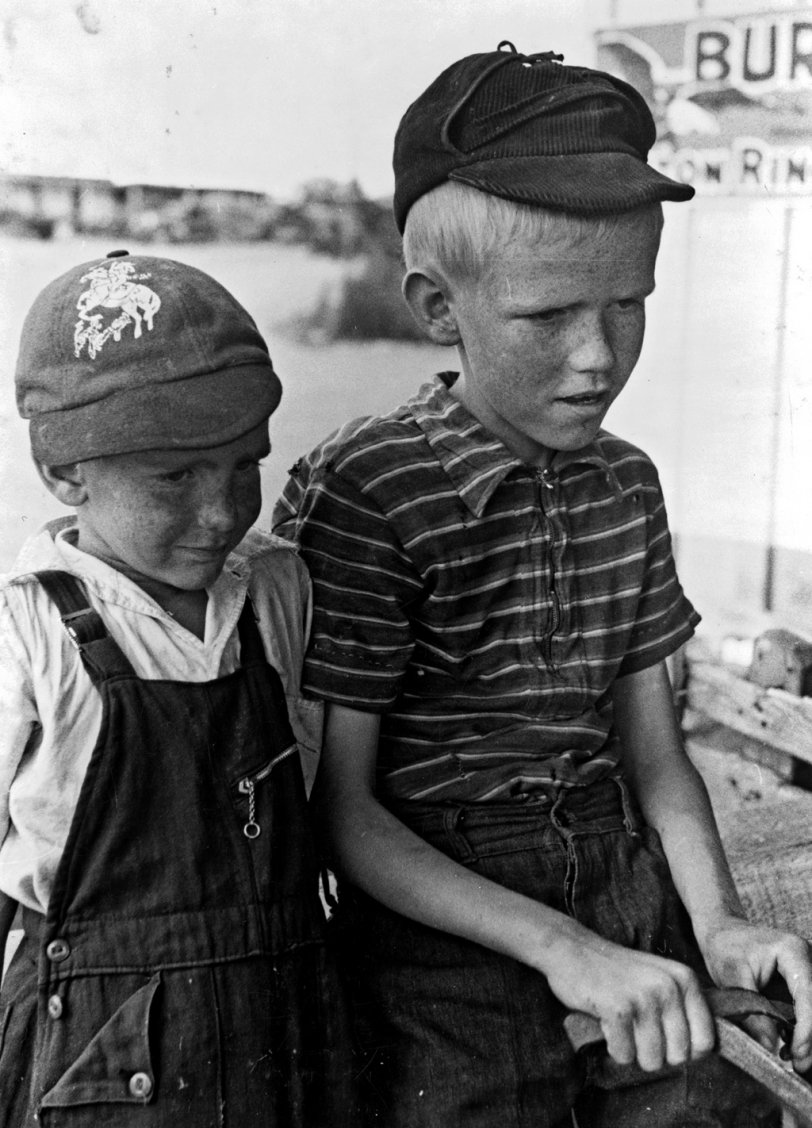
Sons of Mr. Leatherman ride in a burro-drawn cart in Pie Town, New Mexico. Photo by Russell Lee, June, 1940. View full size.
- 1 comment
- 13447 reads
Dime Cut: 1939
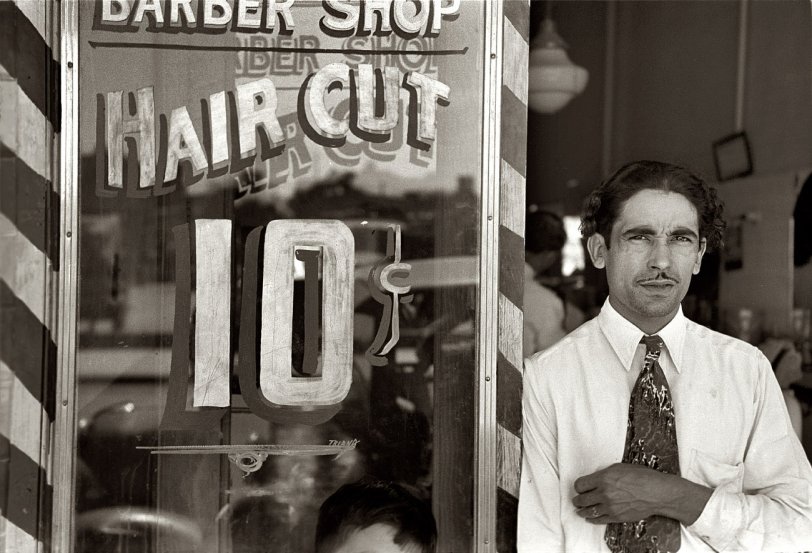
March 1939. "Mexican barber. San Antonio, Texas." View full size. 35mm nitrate negative by Russell Lee for the Farm Security Administration.
- 3 comments
- 13785 reads
Fiesta Bawl: 1940
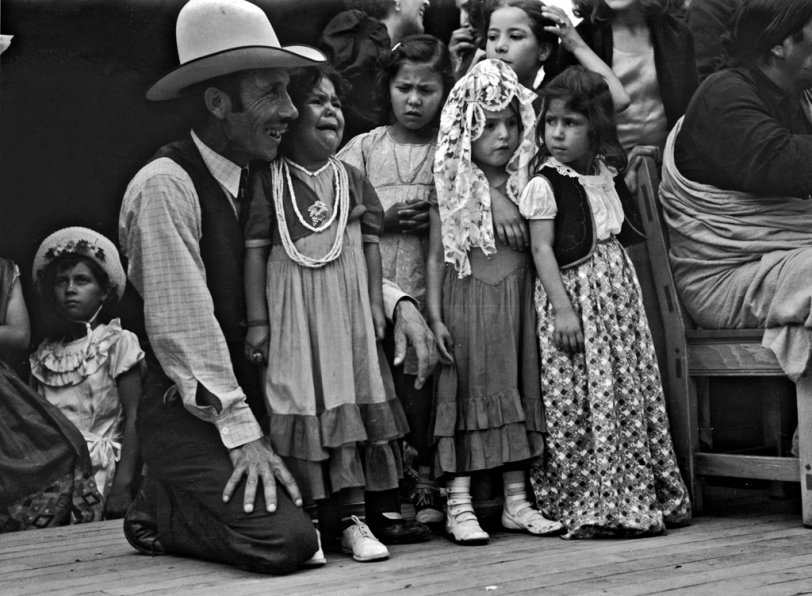
A Spanish-American fiesta in Taos, New Mexico. Photograph by Russell Lee, July, 1940. View full size.
- 6 comments
- 16206 reads
A Million Newsstand Readers: 1937
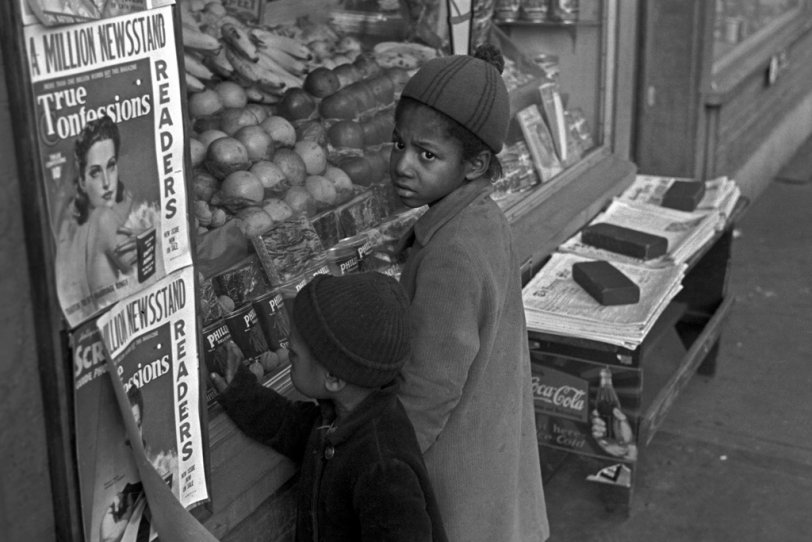
Children browse a street market in Washington, D.C. Photograph by John Vachon, November, 1937. View full size.
- 3 comments
- 12576 reads
This Man May Die: 1943
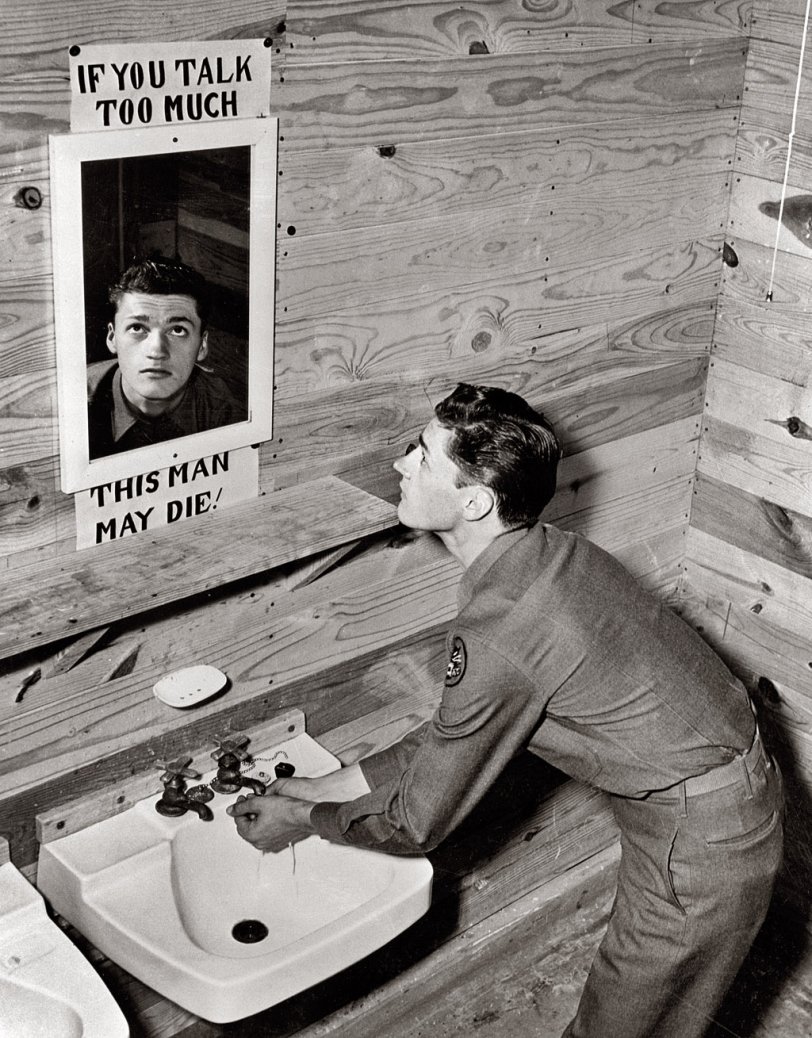
Private Ivan A. Smith, editor of the Camp Hood Panther, at Camp Hood, Texas, originated this novel method of reminding fellow soldiers to practice discretion. From the Office of War Information, 1943. View full size.
- 3 comments
- 25571 reads
Air Travel in Africa: 1936
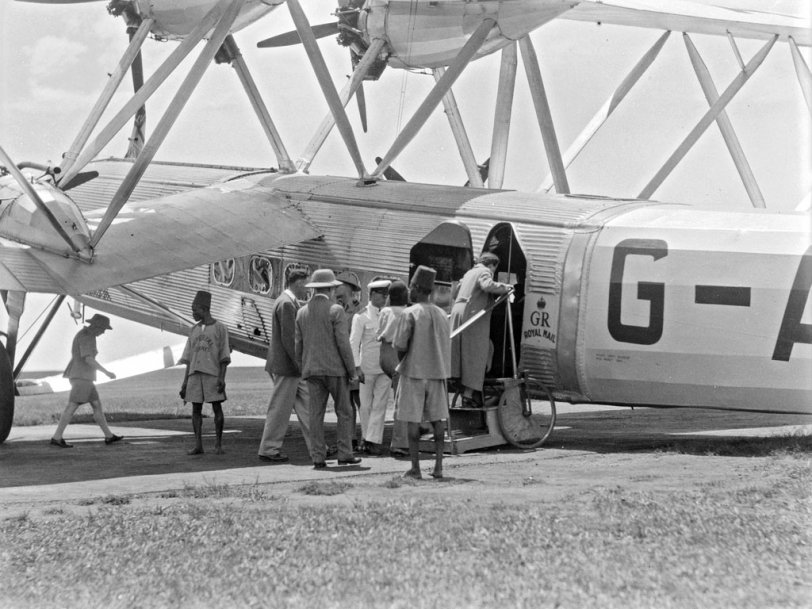
Travelers board an aircraft in an unknown region of Africa. From the Matson Photo Service, 1936. View full size.
- 8 comments
- 27173 reads
Calumet Park: 1943
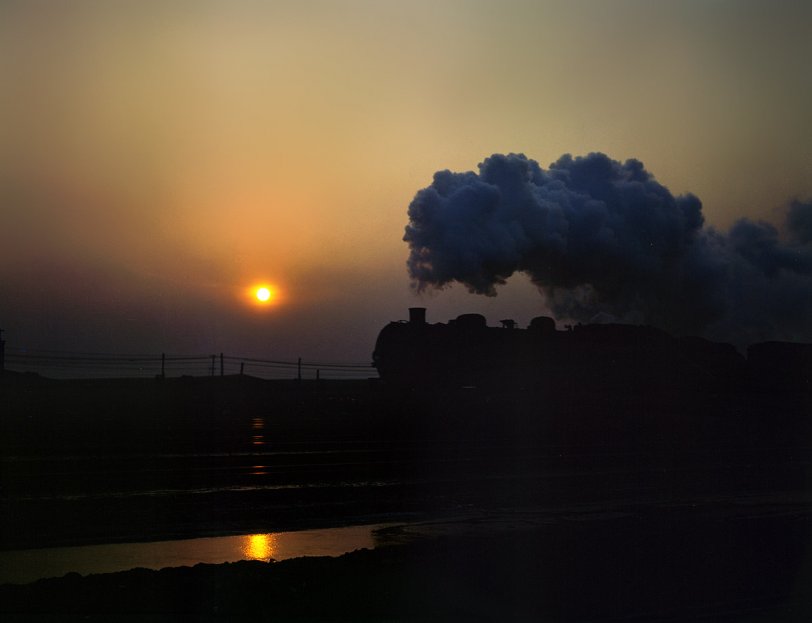
January 1943. Indiana Harbor Belt switch engine near Calumet Park stockyards at Calumet City, Ill. View full size. 4x5 Kodachrome transparency by Jack Delano.
- 2 comments
- 22562 reads
Serve in Silence: 1942
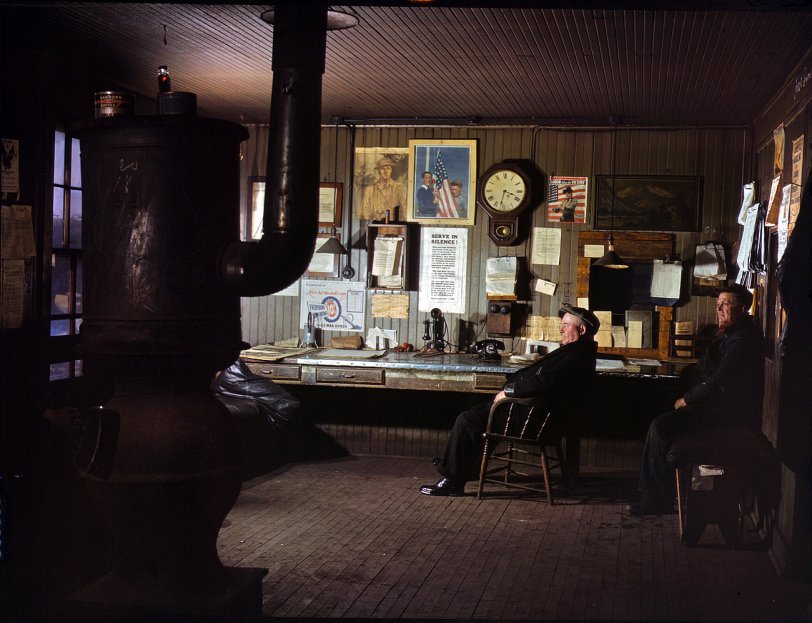
December 1942. A winter afternoon in the North Proviso yardmaster's office, Chicago & North Western Railroad. View full size. 4x5 Kodachrome transparency by Jack Delano. Click here for a closeup of the poster on the wall.
- 10 comments
- 50906 reads
I Am the Egg Girl: 1940
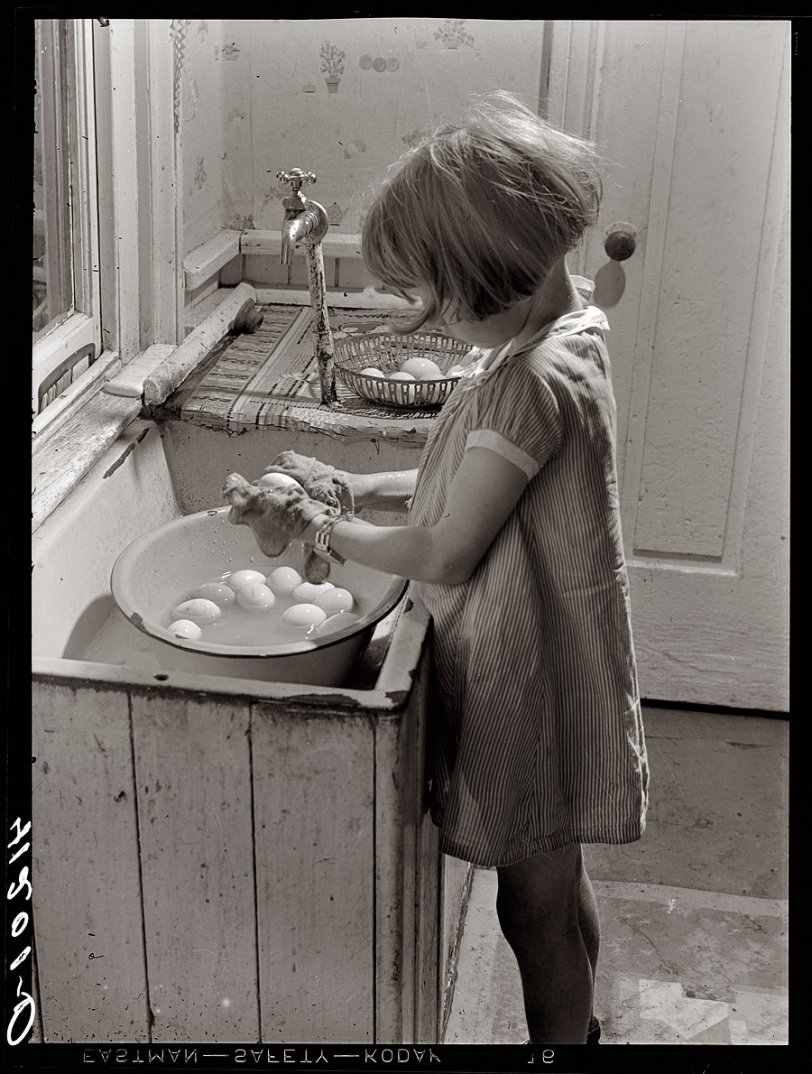
August 1940. Little girl at the Reitz farm near Falls Creek, Pennsylvania, washing eggs to be sold at Tri-County Farmers Co-op Market at Du Bois. View full size. 3¼ inch safety negative by Jack Delano, Farm Security Administration.
- 6 comments
- 37018 reads
Pete's Bar: 1950
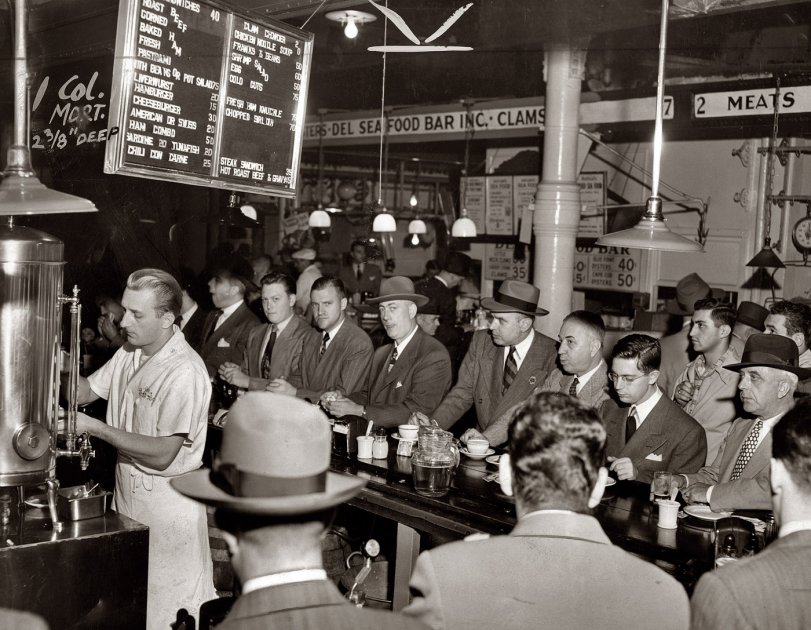
1950. Pete's Bar at Washington Market in Lower Manhattan. Photo by Al Aumuller, New York World-Telegram & Sun. View full size.
- 14 comments
- 45217 reads
Fulton Street: 1943
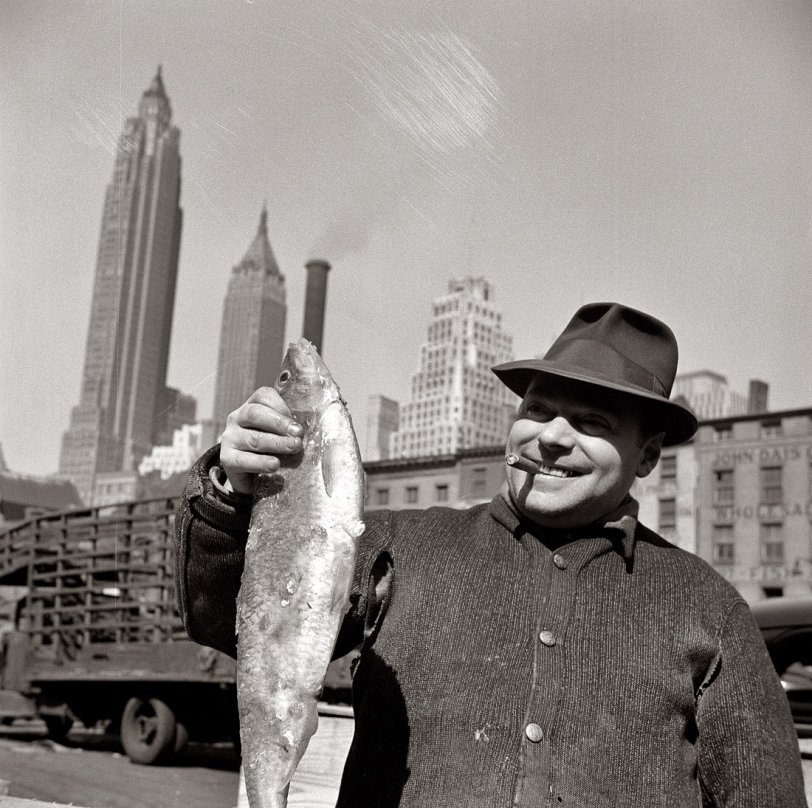
June 1943. Vendor at the Fulton Fish Market in New York City. View full size. Photograph by the legendary Gordon Parks, back when he was just starting out.
- 2 comments
- 16901 reads
Washington Market: 1956
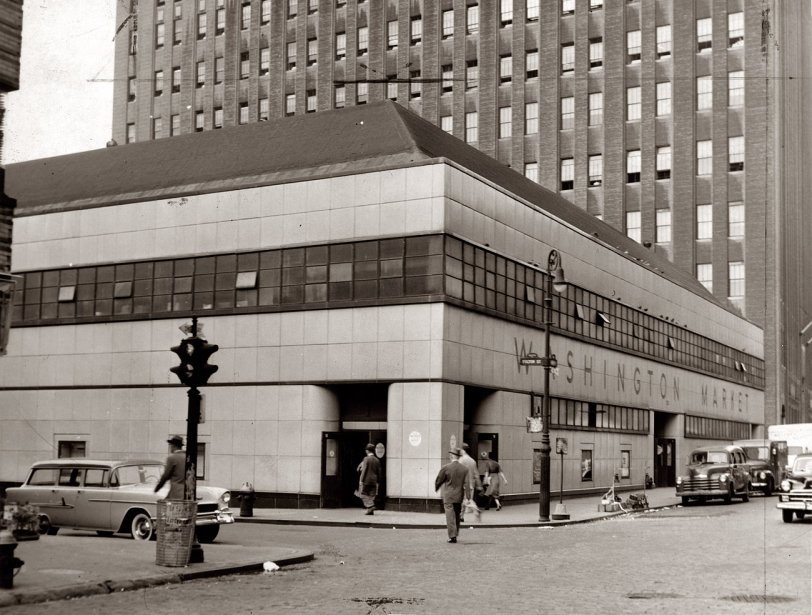
Part of Washington Market in 1956, looking north along Washington Street at Fulton Street in Lower Manhattan. The market, which began as an open-air bazaar in 1812, was renovated with the facade seen here in 1940 and razed in 1967 to make way for the World Trade Center. With more than 800 vendors, it was for many years the largest wholesale produce market in the United States. Photo by Fred Palumbo, New York World-Telegram & Sun. View full size.
- 1 comment
- 19751 reads
Washington Market: 1917
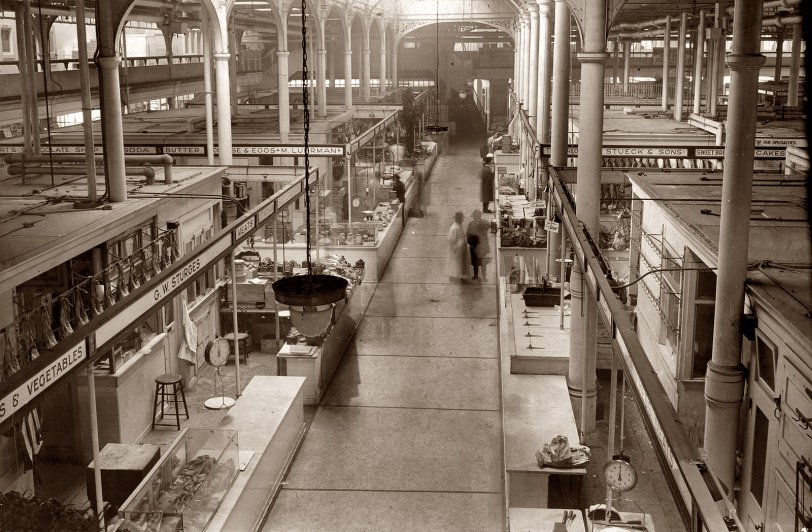
Interior retail stalls at Washington Market in New York City in 1917. New York Word-Telegram & Sun Newspaper Collection. View full size.
New York Public Market: 1948
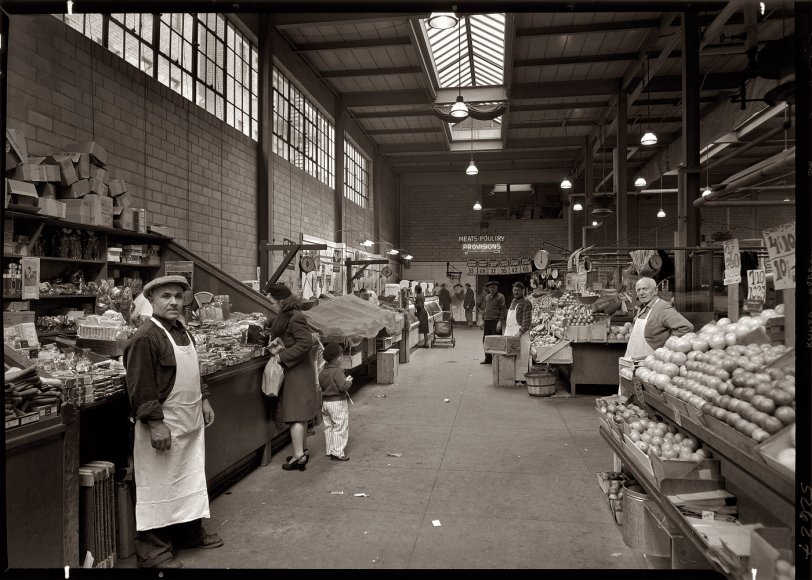
March 22, 1948. The New York City Public Market at First Avenue and East 73rd Street (?), an example of the food market in transition. A typical 19th-century market would have many separate vendors in an open-air space like a town square. By the early 1900s the open-air space had given way to separate vendors under a large shed roof with no walls, often near the train station. Here in 1948 the space is enclosed, but still with separate vendors (greengrocer, butcher, dry goods, fishmonger etc.). After the introduction of centralized distribution and self-service for the various product categories, the individual vendors fade from the scene and the market has a new name: "super-market," now spelled without the hyphen. View full size. 5x7 safety negative by Gottscho-Schleisner.
- 3 comments
- 24823 reads
A Typical Spinner: 1908
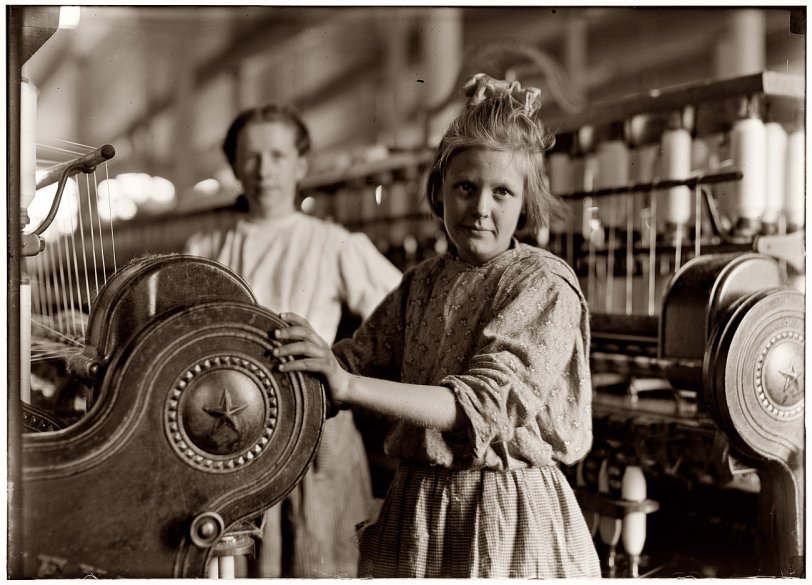
November 1908. "A typical Spinner" at Lancaster Cotton Mills in South Carolina. View full size. Photograph and caption by Lewis Wickes Hine.
- 3 comments
- 14459 reads























